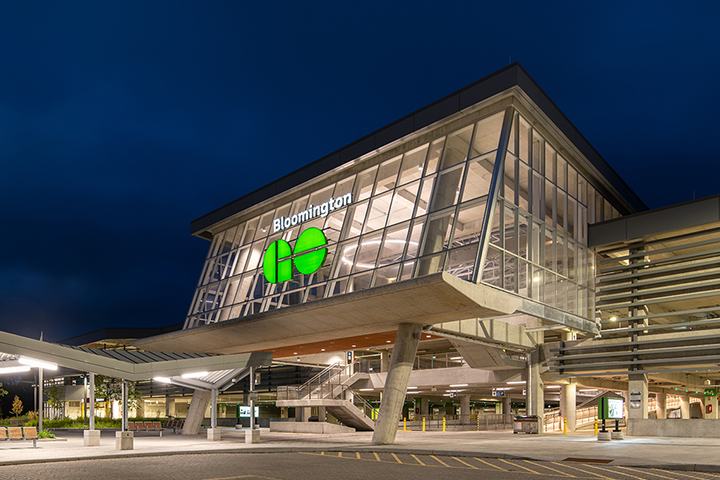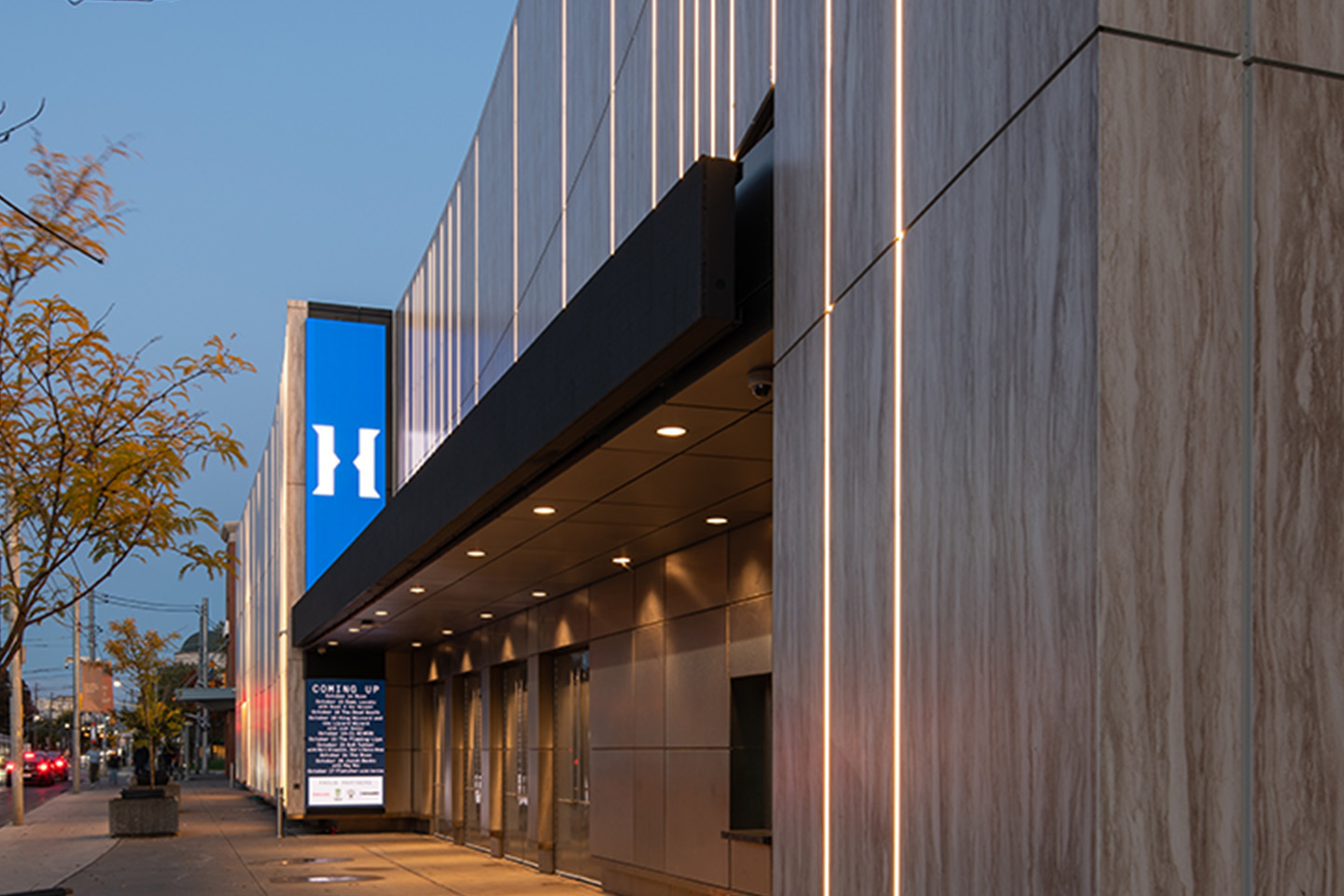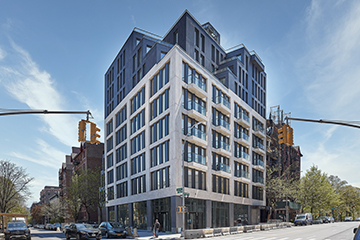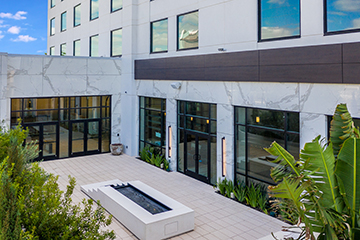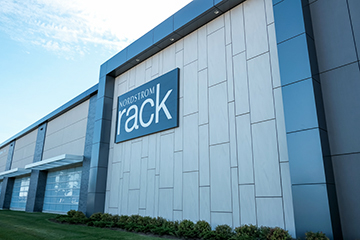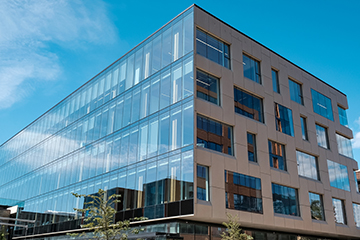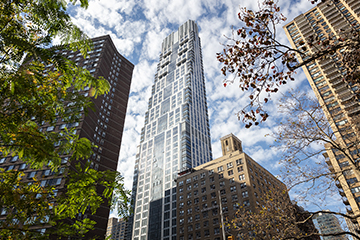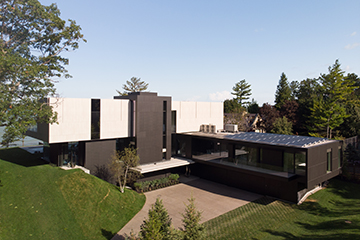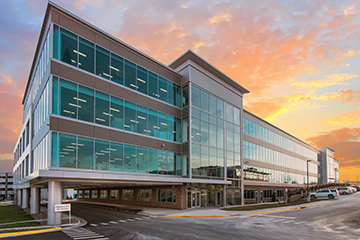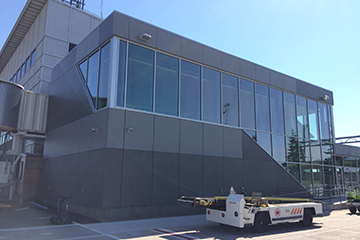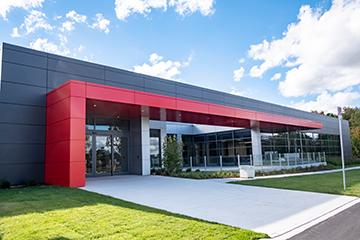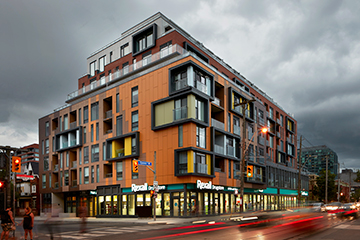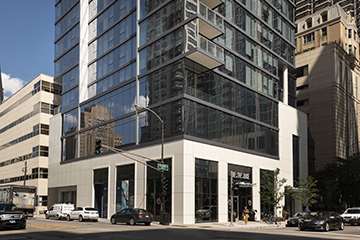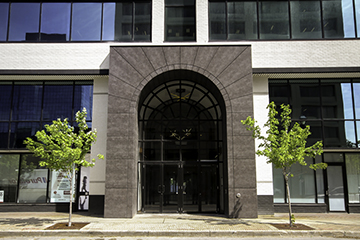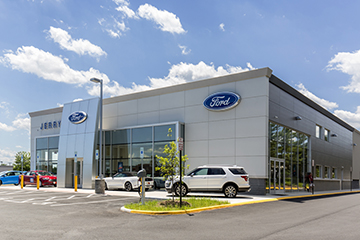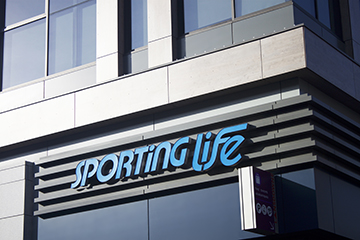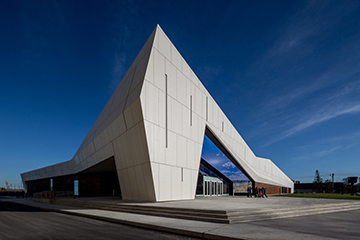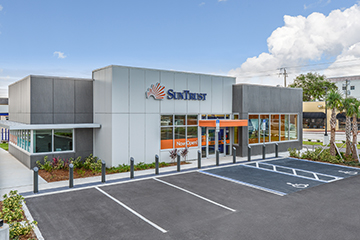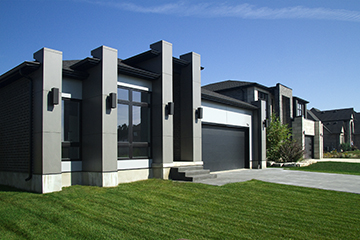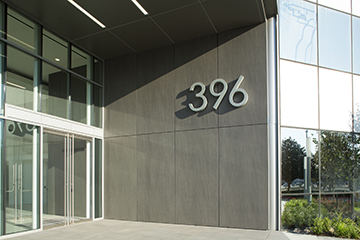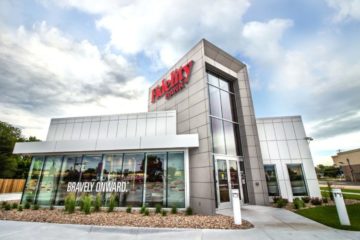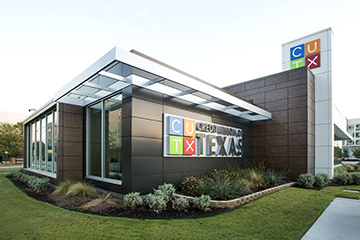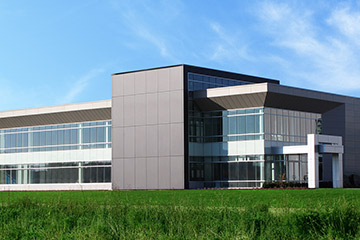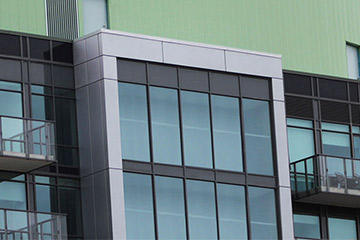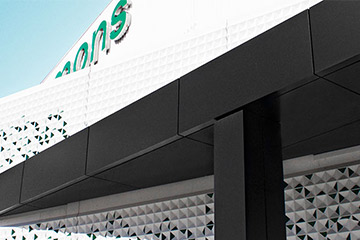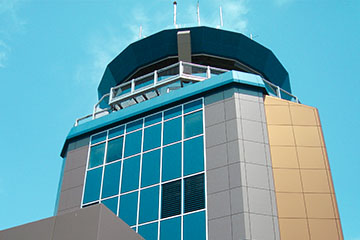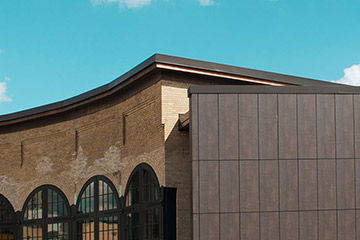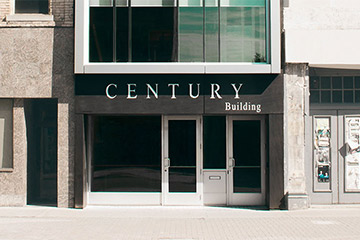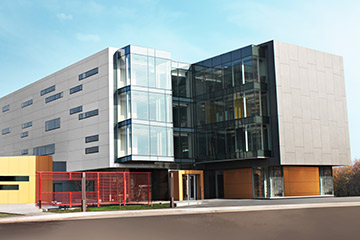Building-Integrated Photovoltaics (BIPV) are solar energy capturing modules used in place of traditional construction materials. The key definition to BIPV products is that they replace building components. Common applications of BIPV include facades, roofing, skylights, windows, and flooring. Solstex®, the Elemex BIPV line, focuses on solar cladding in the form of rainscreen facades.
BIPV products have dual functionality as an electrical generator and as a building component.
Their first function is to absorb incoming solar radiation, and transform it into electricity in the form of direct current. The electricity is then converted to alternate current as it passes through an inverter, and is then directed to building loads, batteries, or out to the local electrical grid. Their second function is to act as a building component. In the case of a façade, solar panels are used as the exterior cladding, acting as the first barrier to environmental forces and composing a key part of the building envelope.
This dual functionality is also a key economic factor. Most materials do not provide a return on investment, but BIPV materials do. Imagine building with products that will pay for themselves over the lifetime of the building, that’s the power of BIPV.
As previously mentioned, it is crucial for BIPV products to act as a building component, rather than supplementing the building. The products that supplement building components are known as Building Applied Photovoltaics (BAPV). This includes traditional rooftop systems, where aluminum racking solutions are secured to existing rooftops to provide attachment for solar modules. An example of a rooftop BIPV product is solar shingles, which act as the roofing component itself.
When BIPV products are used as a building component, they have to present an aesthetic image. There are two main photovoltaic technologies – crystalline silicon and thin-film products – and both present their own challenges and opportunities. Crystalline silicon panels can be made to look homogenous and present different colors by manipulating the front glass used in the modules fabrication – though this comes with a reduced efficiency. Thin-film products present as a glossy black glass sheet naturally, right off the shelf.
Last but not least, you cannot forget the environmental impact of using BIPV products. Green energy is a key part of our global future. BIPV products can help your building do its part, by reducing the resources required to run the building, as well as providing an energy source that building occupants can feel good about.

